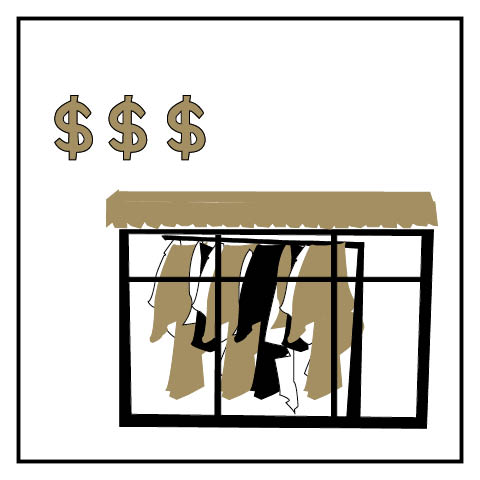Price on the Rise
Growing popularity of thrift stores causes a noticeable shift in pricing.

With thrift stores providing eco-friendly and affordable options to families of any income, it is no wonder that thrifting has grown in popularity. But thrifting is especially important for low-income families who rely on thrift stores to find clothes, furniture, and children’s toys. Plus, most are non-profit organizations that give back to the community.
While thrifting may be trendy now, it did not start out that way. Second-hand clothing stores were first created in the late 19th century, carried a lot of stigmas, and were generally rejected by any member of the upper classes. By the late 20th century, thrifting grew in popularity and appealed to a wider range of people due to maximalist fashion trends and alternative styling. Now, in the 21st century, thrifting is all the rage with sustainability becoming a hot topic and the amount of clothing in landfills growing.
At the moment, thrifting is accepted for members of any tax bracket, and people are generally praised for cute thrift finds. Generation Z has especially popularized thrifting with a special focus on environmental friendliness. There has been rapid growth in fast fashion with online stores that mass-produce low-quality clothing for bargain prices. Fast fashion is, however, generally looked down upon because of unethical labor practices and the negative environmental impact. While thrifting is seen as a frugal and countercultural approach to shopping.
Although thrifting is cheaper and cooler than buying first-hand clothes, the prices are rising rapidly. The prices seem to have doubled or even tripled at certain stores. One explanation for the gouging of prices is that inflation has increased the price of labor, rent, and utilities. But, unfortunately, it seems that some thrift stores are taking advantage of their growing popularity. With thrifting appealing to more middle-class families, stores are raising their prices, and lower-class families have a difficult time keeping up.
To prevent a “gentrification” of thrift stores, it is important to thrift ethically. Ethical consumerism is shopping in a way that decreases social and environmental damage. Choosing a thrift store is an important job, as not all thrift stores are created equal. It is best to support the stores that actually support their communities through meaningful programs. Another problem is buying massive amounts of clothing for a ‘thrift haul’ which is not sustainable and only contributes to consumerism and waste. Instead, shop for pieces that are timeless and will get plenty of wear. Finally, if shopping at stores in low-income areas, avoid buying high-need items such as winter, children’s, and professional clothing. Shopping with ethical standards in mind, as a middle-class consumer, can help prevent the gouging of prices and helps support businesses that care about their customers.

Gaby Ayres is a junior in her second year on the newspaper staff. She spends most of her time reading her bookshelf (sorted by genre) and fawning over...



